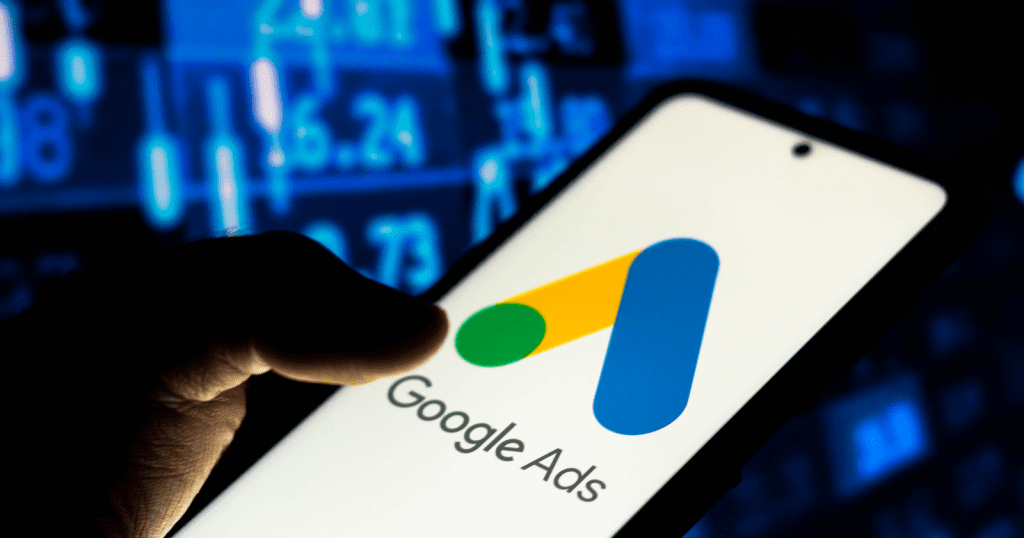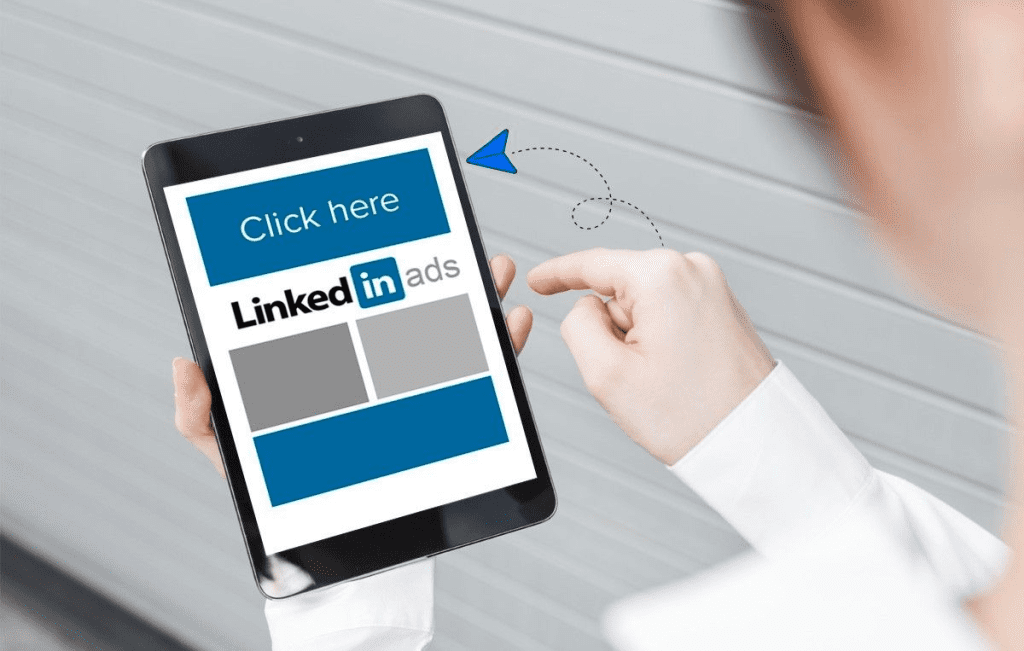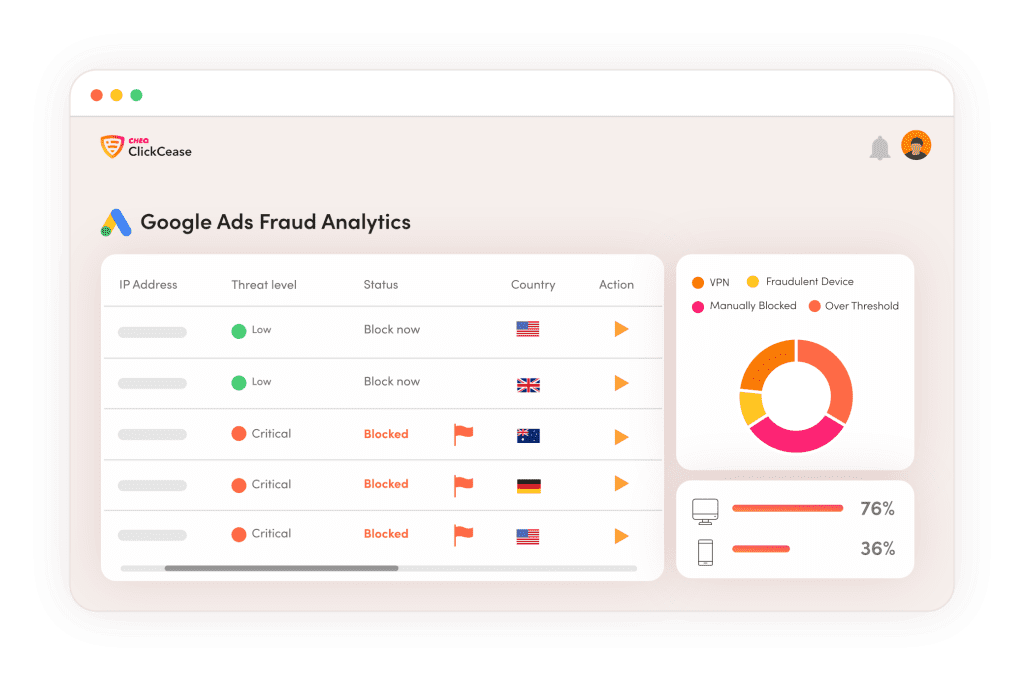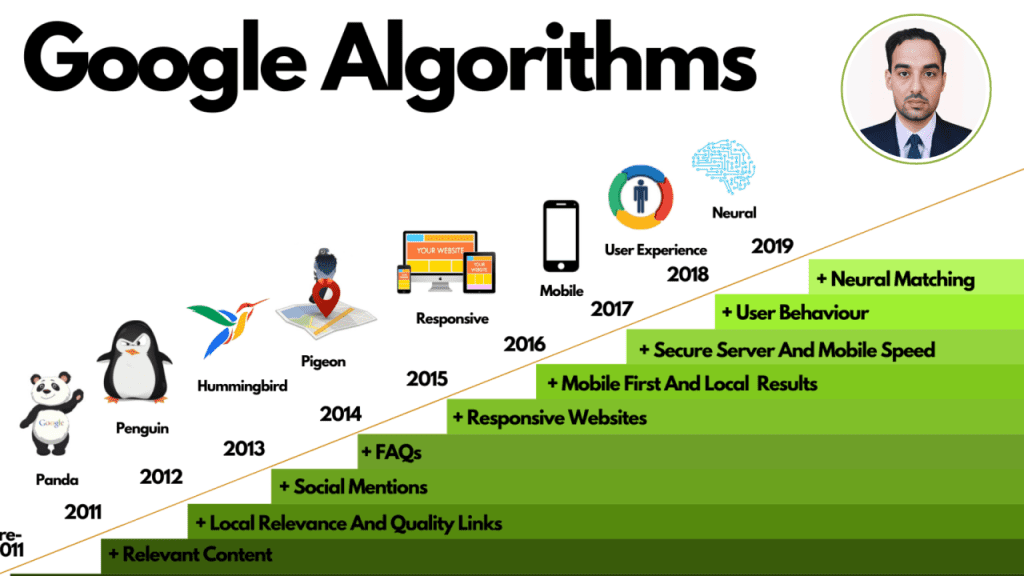Key Takeaways
- Immediate Impact with PPC: Explore how Pay-Per-Click advertising delivers swift results, allowing businesses to enhance visibility and engagement instantly.
- Strategic Bidding Unveiled: Understand the intricacies of real-time auctions, strategic bidding, and the Quality Score metric that positions ads strategically across digital platforms.
- PPC in Action: Delve into real-world examples across Google Ads, Facebook, Instagram, and more, witnessing how businesses leverage PPC to achieve tangible success in various industries.
In the fast-paced realm of digital marketing, where businesses strive to captivate their target audience amidst online cacophony, the significance of strategic advertising cannot be overstated.
One such cornerstone of contemporary advertising that has revolutionized the way brands connect with their audience is Pay-Per-Click (PPC).
In this comprehensive exploration, we embark on a journey to unravel the intricate tapestry of PPC, delving into its definition, intricacies, and real-world examples that illuminate the path for marketers seeking to harness its power.

The Digital Marketing Landscape: Navigating the Noise
As the digital landscape evolves, businesses are constantly challenged to carve their niche in the online marketplace.
Amidst the myriad of marketing strategies, PPC emerges as a dynamic force, offering advertisers a direct and measurable approach to connect with their potential customers. It’s not just a marketing buzzword; it’s a game-changer that demands a nuanced understanding.
Unlocking the Enigma: What is Pay-Per-Click (PPC)?
At its core, Pay-Per-Click is more than just a billing model; it’s a methodology that has redefined the economics of online advertising. Imagine a world where advertisers pay only for tangible results – each click a potential customer makes on their ad.
In this intricate dance of keywords, bids, and audience targeting, PPC orchestrates a symphony of marketing precision, allowing brands to tailor their reach with surgical accuracy.
The Evolution of PPC: A Digital Odyssey
To comprehend the present, we must first trace the evolution of PPC through the annals of digital history.
From its humble beginnings to becoming the linchpin of countless successful campaigns, PPC has undergone a metamorphosis, shaped by technological advances, consumer behavior shifts, and the relentless pursuit of advertising excellence.
This historical context sets the stage for our exploration, providing insight into the journey that led us to the PPC landscape we navigate today.
The Mechanics of PPC: Unraveling the Intricacies
How does PPC work, you might wonder?
The mechanics behind this advertising model involve an elaborate dance between advertisers, search engines, and, ultimately, the end-users.
We’ll embark on a detailed expedition into the auction system, bidding strategies, and the factors that dictate the placement of ads.
From the inception of a campaign to the moment a user clicks, every facet of the PPC process will be laid bare.
Key Components: Decoding the DNA of a Successful PPC Campaign
Keywords, ad creatives, and targeting – these are the building blocks of a potent PPC campaign.
In this segment, we dissect the anatomy of a successful PPC strategy, exploring the pivotal role played by keywords in unlocking audience intent, crafting compelling ad copy that resonates, and the crucial interplay of targeting options that define campaign efficacy.
Real-World Exemplars: Google Ads and Beyond
Theory meets practice as we delve into real-world examples that exemplify the power of PPC across various platforms.
The ubiquitous Google Ads take centre stage, showcasing how businesses leverage its expansive reach and sophisticated targeting options.
But the PPC landscape isn’t confined to Google alone – we’ll also traverse the diverse terrain of social media advertising, exploring success stories from platforms like Facebook, Instagram, and X (formerly Twitter).
Why PPC? Unveiling the Multifaceted Benefits
The allure of PPC lies not only in its intricacies but also in the tangible benefits it bestows upon advertisers.
From immediate results and heightened visibility to targeted advertising that speaks directly to segmented audiences, PPC offers a trove of advantages.
Join us as we uncover the multifaceted merits that make PPC an indispensable tool in the marketer’s arsenal.
In the ever-evolving digital marketing ecosystem, PPC stands as a beacon of precision, a beacon guiding businesses through the labyrinth of online competition.
As we navigate through the intricacies of Pay-Per-Click advertising, this exploration isn’t just a theoretical exercise; it’s a practical roadmap for marketers looking to harness the power of PPC and elevate their online presence.
But, before we venture further, we like to share who we are and what we do.
About AppLabx
From developing a solid marketing plan to creating compelling content, optimizing for search engines, leveraging social media, and utilizing paid advertising, AppLabx offers a comprehensive suite of digital marketing services designed to drive growth and profitability for your business.
AppLabx is well known for helping companies and startups use digital marketing to drive web traffic to their websites and web apps.
At AppLabx, we understand that no two businesses are alike. That’s why we take a personalized approach to every project, working closely with our clients to understand their unique needs and goals, and developing customized strategies to help them achieve success.
If you need a digital consultation, then send in an inquiry here.
What is Pay-Per-Click (PPC)? Definition and Examples
- What is Pay-Per-Click (PPC)?
- How does PPC work?
- Examples of PPC Advertising
- Benefits of PPC Advertising
- Common PPC Challenges and Solutions
1. What is Pay-Per-Click (PPC)?
In the dynamic realm of digital advertising, understanding the intricacies of Pay-Per-Click (PPC) is akin to unlocking a treasure trove of marketing precision.
Let’s embark on a comprehensive journey into the depths of PPC, deciphering its definition, mechanics, and real-world implications.

Defining Pay-Per-Click (PPC): A Billing Model and Beyond
- Definition: At its core, PPC is a digital advertising model where advertisers pay a fee each time their ad is clicked. It’s a departure from traditional advertising, shifting the payment focus from ad impressions to actual user engagement.
- Beyond Clicks: While the billing model revolves around clicks, PPC transcends mere interactions.
It’s a strategic approach where advertisers bid on keywords, aiming to have their ads displayed to a targeted audience, driving not just traffic but potential customers to their websites.
Evolution of PPC: From Inception to Dominance
- Historical Context: PPC’s journey traces back to the early 2000s, with pioneers like Goto.com introducing a pay-for-placement search engine model. Google Ads, formerly known as AdWords, revolutionized PPC in 2000, forever changing the digital advertising landscape.
- Growth and Significance: In 2022, Google generated 224.5 billion U.S. dollars in advertising revenue, a testament to the monumental growth and significance of PPC in the digital era.
2. How does PPC work?
In the intricate dance of online advertising, Pay-Per-Click (PPC) stands out as a methodical and results-driven approach.
To truly grasp the essence of PPC, it’s essential to unravel the mechanics that govern its operation.
In this section, we dissect the fundamental workings of PPC, from the auction system to the critical components that make it a powerhouse in the digital marketing arena.

The Auction System and Bidding
- Real-Time Auctions: At the heart of PPC lies a real-time auction system. When a user initiates a search, search engines conduct lightning-fast auctions to determine which ads will be displayed and in what order.
Google is functioning in an auction that is taking place millions of times per day across the world. - Bidding Strategies: Advertisers bid on keywords relevant to their target audience. Bids represent the maximum amount an advertiser is willing to pay for a click on their ad.
Various bidding strategies, such as manual, automated, and enhanced CPC, allow advertisers to tailor their approach based on campaign goals. - Quality Score: It’s not just about the highest bidder winning the auction. Search engines like Google factor in a Quality Score, a metric that considers the relevance of the ad, the expected click-through rate (CTR), and the quality of the landing page.
A higher Quality Score can lead to better ad positions at a lower cost-per-click (CPC).

Ad Placement and Ranking Factors
- Positioning Based on Bid and Quality Score: Ad placement is determined by the bid amount and the Quality Score.
An advertiser with a high bid may secure a prime position, but a combination of a competitive bid and a compelling ad that resonates with the audience ensures optimal ad placement. - Ad Extensions: To enhance ad visibility and engagement, ad extensions provide additional information like site links, callouts, and structured snippets.
According to Google, advertisers can see a 20% increase in clickthrough rate on average when 4 site links show with their Search ads. - Ad Rank Threshold: Search engines have an ad rank threshold, meaning an ad must meet a certain level of quality to be shown. This ensures that users are presented with relevant and valuable content.
Components of a PPC Campaign
- Keywords and Targeting Strategies: Keywords are the foundation of a PPC campaign. Advertisers conduct meticulous research to identify keywords relevant to their products or services. Targeting strategies, including location, demographics, and device targeting, further refine the audience.
- Ad Creatives and Copywriting: Crafting compelling ad creatives and persuasive copy is an art in itself. Advertisers aim to capture attention, convey value propositions, and entice users to click.
A/B testing different ad variations helps identify the most effective messaging. - Landing Page Optimization: The user’s journey doesn’t end with a click; it continues to the landing page. A well-optimized landing page ensures a seamless transition, providing users with the information they seek and encouraging them to take desired actions.
Data-Driven Decision Making
- Analytics and Reporting: The beauty of PPC lies in its data-rich environment. Robust analytics tools track every aspect of a campaign, from impressions and clicks to conversions. Google Analytics, for instance, provides granular insights into user behaviour on the website.
- Conversion Tracking: Setting up conversion tracking is imperative for understanding the success of a PPC campaign. Whether it’s a purchase, form submission, or another desired action, tracking conversions helps in assessing ROI and refining strategies.
- Continuous Optimization: PPC is an iterative process. Advertisers constantly analyze data, identify trends, and make data-driven decisions to optimize campaigns. Regular adjustments to bids, keywords, and ad creatives ensure campaigns stay relevant and effective.
3. Examples of PPC Advertising
Diving into the practical application of Pay-Per-Click (PPC) advertising is paramount for marketers seeking inspiration and insights.
In this extensive exploration, we’ll traverse the diverse landscapes of PPC, exploring successful campaigns on prominent platforms and extracting invaluable lessons from their strategies.

Google Ads: The Unrivaled Titan
- Scenario: Let’s consider a scenario where a travel agency wants to boost bookings for its luxury vacation packages.
- Ad Campaign: Leveraging Google Ads, the agency crafts highly targeted ads. For example, they bid on keywords like “luxury travel,” “exclusive vacations,” and “5-star resorts,” ensuring their ads are shown to users actively seeking premium travel experiences.
- Ad Extensions: To enhance ad visibility, the travel agency utilizes site link extensions, showcasing specific vacation destinations and callout extensions highlighting exclusive amenities.
- Result: With strategic bidding, compelling ad creatives, and relevant extensions, the travel agency might experience increased visibility among high-intent users, leading to a surge in bookings.
Google Ads provides access to over 2 million websites and reaches over, proving instrumental in achieving campaign goals.

Facebook Ads: Precision Targeting for Varied Audiences
- Scenario: Imagine an e-commerce business specializing sustainably. With Facebook Ads, they aim to connect with environmentally conscious consumers.
- Ad Campaign: The business utilizes Facebook’s robust targeting options, narrowing down its audience based on interests such as eco-friendly living, sustainable fashion, and ethical brands. They showcase eco-friendly product lines in visually appealing carousel ads.
- Ad Spend Efficiency: According to WordStream, the average cost per click (CPC) on Facebook Ads is $1.68 across all industries.
By strategically targeting a niche audience, the business optimizes ad spend, ensuring each click has the potential to convert. - Engagement and Conversions: The visually appealing ads coupled with targeted messaging result in increased engagement and conversions. The versatility of Facebook Ads allows the business to experiment with various formats, from image ads to video content.

Instagram Ads: Visual Storytelling for Brand Impact
- Scenario: A cosmetic brand wants to leverage Instagram’s visual-centric platform to promote a new product line.
- Ad Campaign: Crafting visually stunning ads featuring the new products, the brand utilizes Instagram’s immersive ad formats like Stories and Carousel Ads.
In 2021, there were 1.21 billion monthly active users of Meta’s Instagram, making up over 28 percent of the world’s internet users, providing an ideal canvas for visual storytelling. - Influencer Collaborations: The brand partners with beauty influencers to create authentic content.
- Result: The combination of eye-catching visuals, compelling influencer collaborations, and strategic placement within Instagram’s engaging content stream yields heightened brand visibility and product adoption.
X (formerly Twitter Ads): Real-Time Engagement and Trends
- Scenario: A tech company launches a new product and aims to create buzz and engagement on X (formerly Twitter).
- Ad Campaign: Leveraging X (formerly Twitter) Ads, the company engages in real-time conversations using Promoted Tweets. They participate in relevant trending topics, ensuring their ads align with ongoing discussions in the tech community.
- Promoted Trends: Investing in Promoted Trends, the tech company places its product at the forefront of X (formerly Twitter) trending topics. X (formerly Twitter) users, known for their receptivity to breaking news and trends, become exposed to the new product.
- Engagement Metrics: X (formerly Twitter)’s engagement-focused metrics, such as likes, retweets, and replies, allow the company to gauge the campaign’s resonance in real-time.
X (formerly Twitter) Ads’ agility in adapting to trending topics proves instrumental in creating a viral effect.

LinkedIn Ads: B2B Precision Targeting
- Scenario: An enterprise software company aims to reach decision-makers in the IT sector with a new software solution.
- Ad Campaign: Utilizing LinkedIn Ads, the company targets professionals based on job titles, industries, and company sizes. Sponsored Content and Sponsored InMail are employed to deliver tailored messages directly to the LinkedIn inboxes of key decision-makers.
- Lead Generation Forms: LinkedIn’s Lead Generation Forms feature facilitates seamless lead capture directly within the platform. Lead Gen Forms drive 5x higher conversion than landing pages.
- Result: The precision targeting on LinkedIn ensures the software company’s ads reach a highly relevant audience. The combination of tailored messaging and streamlined lead capture results in quality leads for their enterprise solution.

Comparative Analysis: Key Takeaways
- Platform Diversity: Each platform offers unique advantages. Google Ads excels in search intent, while social media platforms like Facebook and Instagram provide visual storytelling opportunities. LinkedIn, on the other hand, caters to B2B audiences.
- Audience Targeting: The success of these campaigns hinges on meticulous audience targeting. Understanding the demographics, interests, and behaviors of the target audience ensures efficient ad spend and higher conversion rates.
- Ad Creatives and Formats: Compelling ad creatives tailored to each platform’s format are crucial. Visual content resonates on Instagram, concise and engaging copy works well on X (formerly Twitter), and professional, business-focused content suits LinkedIn.
- Data-Driven Optimization: Regular analysis of campaign performance, A/B testing of ad variations, and adapting strategies based on data insights are common threads across these successful PPC campaigns.
4. Benefits of PPC Advertising
Pay-Per-Click (PPC) advertising isn’t just a strategy; it’s a dynamic tool that empowers businesses to navigate the digital landscape with precision.
In this extensive exploration, we’ll delve into the multifaceted benefits of PPC, supported by real-world examples and backed by relevant data and statistics.

Immediate Results and Enhanced Visibility
- Immediate Impact: One of the most compelling advantages of PPC is its ability to deliver immediate results. Unlike organic methods that take time to gain traction, PPC campaigns can be set up swiftly, and ads start appearing in search results almost instantly.
- Example: Consider a retail business launching a flash sale. Through PPC, they can create targeted ads, ensuring swift visibility for the promotion. Immediate exposure leads to increased website traffic and potential conversions.
- Data Insight: According to Google, businesses make an average of $2 in revenue for every $1 they spend on Google Ads. This highlights the immediate and measurable impact PPC can have on a company’s bottom line.
Targeted Advertising and Audience Segmentation
- Precision Targeting: PPC allows advertisers to target specific demographics, interests, and online behaviors. This precision targeting ensures that ads are presented to users who are more likely to be interested in the products or services being promoted.
- Example: An online bookstore can use PPC to target users searching for specific genres or authors. By bidding on relevant keywords, the bookstore ensures its ads reach an audience already expressing an interest in books.
- Statistical Reinforcement: PPC visitors have a 50% higher likelihood of purchasing than organic visitors.
This emphasizes the efficacy of targeted advertising in PPC.
Measurable and Trackable ROI
- Granular Analytics: PPC platforms provide comprehensive analytics tools, allowing advertisers to track various metrics such as impressions, clicks, and conversions. This granular data facilitates a deep understanding of campaign performance.
- Example: A software company running a PPC campaign can track the number of clicks on their ads, monitor user behavior on the landing page, and measure the conversion rate for users who downloaded a trial version. This data informs strategic decisions.

Flexibility and Control Over Ad Spend
- Budget Management: PPC provides advertisers with unparalleled flexibility in managing their budgets. Daily or campaign-specific budgets can be set, ensuring complete control over spending. This flexibility allows businesses to adapt to changing needs and market conditions.
- Example: A small business can start with a modest budget for a local PPC campaign, gradually scaling up as they observe positive results. This scalability ensures that resources are allocated efficiently.
- Data-Driven Optimization: Businesses can optimize their budgets based on data insights. If certain keywords or campaigns are consistently delivering high ROI, more budget can be allocated to these areas, maximizing returns.
Enhanced Brand Visibility and Credibility
- Strategic Placement: PPC ads are strategically placed at the top of search engine results pages (SERPs) and on various online platforms. This prime placement enhances brand visibility, ensuring that businesses are prominently featured when users search for relevant products or services.
- Example: A startup in the tech industry can utilize PPC to quickly establish brand visibility. By bidding on industry-specific keywords, the startup’s ads appear alongside established competitors, fostering brand recognition.
- Consumer Perception: According to a study, search ads have a clear and positive impact on brand awareness. This underscores the role of PPC in not just driving immediate traffic but also in shaping consumer perceptions over the long term.
Adaptability to Market Dynamics
- Agile Adjustments: PPC campaigns can be adjusted in real-time to adapt to changing market dynamics. If there’s a sudden surge in demand for a specific product or service, PPC allows businesses to swiftly capitalize on emerging opportunities.
- Example: During seasonal peaks, such as the holiday season, an e-commerce store can dynamically adjust its PPC strategy, increasing bids on high-demand keywords and tailoring ad creatives to match festive themes.
- Timely Response: The ability to make instant adjustments ensures that businesses stay competitive and responsive to market trends, fostering agility in their advertising strategies.
Global Reach with Local Impact
- Geo-Targeting Capabilities: PPC platforms offer robust geo-targeting options, enabling businesses to reach audiences at a local, regional, or global level. This flexibility is particularly beneficial for businesses with specific geographic target markets.
- Example: A restaurant chain can utilize PPC to target users within a specific radius of each location. Special promotions, such as discounts or exclusive menu items, can be promoted to users in proximity, driving foot traffic.
- Local Business Impact: According to Google, 76% of people who search on mobile for something nearby visit a business within a day, underlining the local impact PPC can have.
Continuous Improvement Through Testing and Optimization
- A/B Testing: PPC allows for A/B testing of various elements, including ad copy, images, and landing page layouts. This iterative testing process helps identify what resonates best with the target audience.
- Example: An e-commerce store can run A/B tests on different variations of ad headlines and descriptions. By analyzing which combinations lead to higher click-through rates and conversions, they refine their future ad creatives.
- Statistical Significance: A/B testing ensures changes are based on statistically significant data. Statistical significance is essential to ensure that results are not due to random chance, increasing the reliability of optimization efforts.
5. Common PPC Challenges and Solutions
Pay-Per-Click (PPC) advertising is a dynamic and effective tool, but it comes with its unique set of challenges.
In this comprehensive exploration, we delve into the common hurdles faced by advertisers in the PPC landscape and provide strategic solutions, drawing insights from real-world examples and industry data.

Click Fraud and Invalid Clicks
- Challenge Overview: Click fraud, where fraudulent clicks on ads inflate costs without delivering genuine engagement, remains a significant concern for advertisers.
- Click fraud is estimated to affect around 20% of all paid links on the internet.
- Solution Strategies:
- Click Fraud Prevention Tools: Employ dedicated tools like ClickCease, Fraudlogix, or PPC Protect to detect and prevent click fraud in real-time.
- Regular Analytics Monitoring: Keep a close eye on analytics to identify irregularities, sudden spikes in clicks, or unusual user behaviour that may indicate click fraud.
- Example: A small e-commerce business utilizes ClickCease to actively monitor and block suspicious clicks. By staying vigilant, they protect their budget and ensure that resources are allocated to genuine user engagement.

Budget Constraints and Cost Management
- Challenge Overview: Balancing the desire for optimal results with limited budgets is a common challenge for advertisers.
- Solution Strategies:
- Strategic Bidding: Implement bidding strategies aligned with campaign goals, whether it’s maximizing clicks, impressions, or conversions.
- Focus on High-Performing Keywords: Regularly review and refine keyword lists, prioritizing high-performing keywords that offer a strong return on investment (ROI).
- Ad Schedule Optimization: Adjust ad schedules to focus on peak times when the target audience is most active, ensuring efficient use of the budget.
- Example: A local service business strategically manages its budget by bidding on specific high-converting keywords and optimizing ad schedules. This approach ensures maximum reach within budget limitations.
Ad Performance and Relevance
- Challenge Overview: Ensuring that ads remain relevant and perform optimally is an ongoing challenge due to evolving user behaviour and market dynamics.
- Importance of Relevance: Google’s Quality Score metric, considering factors like expected CTR, ad relevance, and landing page experience, emphasizes the significance of relevance.
- Solution Strategies:
- Regular Keyword Updates: Stay attuned to evolving market dynamics by regularly updating the list of keywords to reflect shifts in user intent.
- Ad Creative Refresh: Conduct A/B testing on ad variations to identify the most engaging and effective creatives.
- Landing Page Optimization: Ensure landing pages align seamlessly with ad content, providing a cohesive and user-friendly experience.
- Example: An online retailer continually refreshes ad creatives to reflect changing trends. By aligning landing pages with the latest ad content, they maintain relevance and user engagement.
Seasonal Peaks and Demand Surges
- Challenge Overview: Advertisers must effectively capitalize on seasonal peaks and sudden demand surges to maximize opportunities.
- Solution Strategies:
- Dynamic Bidding: Implement dynamic bidding strategies during peak seasons to automatically adjust bids based on factors like device, location, and time.
- Tailor Ad Creatives: Customize ad creatives to align with seasonal promotions, holidays, or events, capturing the festive spirit and maximizing resonance.
- Example: An e-commerce store strategically increases bids on holiday-related keywords during peak shopping times. By tailoring ad creatives to highlight seasonal promotions, they capitalize on increased user interest.

Adapting to Algorithm Changes and Updates
- Challenge Overview: The ever-evolving nature of search engine algorithms poses a challenge for advertisers to adapt their strategies accordingly.
- Algorithmic Impact: Search engines regularly update algorithms to enhance user experience and relevance, affecting the visibility and performance of PPC campaigns.
- Solution Strategies:
- Stay Informed: Keep abreast of algorithmic changes by following official updates from search engine providers like Google.
- Continuous Optimization: Adopt an iterative approach to campaign management, making adjustments based on performance data and algorithmic shifts.
- Example: An online retailer stays proactive in staying informed about Google’s algorithm updates. By continuously optimizing campaigns and staying ahead of algorithmic changes, they ensure sustained visibility and performance.

Competitive Landscape and Bid Wars
- Challenge Overview: Highly competitive industries often lead to bid wars, driving up costs and intensifying competition.
- Competitive Intensity: Industries with the highest CPCs are legal at $6.75.
- Solution Strategies:
- Long-Tail Keywords: Focus on long-tail keywords to capture niche audiences and reduce competition.
- Quality Score Optimization: Emphasize improving Quality Score through relevant ad creatives, landing page optimization, and strategic keyword selection.
- Example: A law firm strategically incorporates long-tail keywords related to specific legal services.
- By optimizing Quality Score, they might achieve cost-effective visibility within their niche despite intense competition.
Conclusion
As we draw the curtain on this extensive exploration of Pay-Per-Click (PPC), it’s evident that PPC is more than just an advertising strategy – it’s an intricate blend of art and science that empowers businesses to navigate the digital landscape with precision and finesse.
From understanding the core definition to unravelling the complexities of PPC mechanics, examples, benefits, and common challenges, this journey has been a comprehensive guide for both novices and seasoned marketers.
The Essence of PPC: A Recap
At its core, PPC epitomizes a results-driven approach where advertisers pay a fee each time their ad is clicked.
This cost-per-click (CPC) model forms the bedrock of a dynamic ecosystem, fueled by real-time auctions, strategic bidding, and a multitude of components working in tandem to deliver targeted visibility to businesses.
Unveiling the Dynamics: From Auctions to Ad Positioning
The heart of PPC lies in the intricacies of the auction system. Real-time auctions, fueled by meticulous bidding strategies and the Quality Score metric, determine the fate of ads in the digital realm.
Advertisers strategically position themselves, leveraging ad extensions, ad creatives, and landing page optimization to capture the attention and clicks of their target audience.
From Theory to Practice: Real-World Examples Illuminate
Embarking on the journey of PPC advertising, we traversed diverse platforms such as Google Ads, Facebook Ads, Instagram, X (formerly Twitter), and LinkedIn.
Real-world scenarios illustrated how businesses, whether in travel, e-commerce, cosmetics, tech, or B2B services, strategically applied PPC to achieve tangible results.
These examples served as beacons, guiding marketers on the nuances of tailoring strategies to specific platforms and industries.
Basking in the Benefits: PPC as a Cornerstone of Digital Triumph
The benefits of PPC emerged as a powerful narrative throughout this exploration. From immediate results and enhanced visibility to targeted advertising, measurable ROI, and adaptability to market dynamics, PPC stands tall as a versatile ally in the marketer’s arsenal.
Statistical revelations emphasized the impact PPC has on revenue generation, brand awareness, and consumer perceptions.
Overcoming Hurdles: Strategies for Triumph in the Face of Challenges
Acknowledging that challenges are inherent in the PPC landscape, we navigated common obstacles with strategic solutions.
Click fraud, budget constraints, maintaining ad relevance, tackling seasonal peaks, adapting to algorithm changes, and overcoming competitive bid wars were scrutinized.
PPC Best Practices: A Blueprint for Triumph
As we conclude this expedition, it’s essential to emphasize that PPC success is not a one-time accomplishment but an ongoing journey.
Adhering to best practices, embracing continuous optimization, staying abreast of industry trends, and fostering adaptability will ensure that PPC remains a potent force in achieving marketing objectives.
If you are looking for a top-class digital marketer, then book a free consultation slot here.
If you find this article useful, why not share it with your friends and business partners, and also leave a nice comment below?
We, at the AppLabx Research Team, strive to bring the latest and most meaningful data, guides, and statistics to your doorstep.
To get access to top-quality guides, click over to the AppLabx Blog.
People also ask
What is an example of PPC?
An example of PPC is a business bidding on keywords related to its products or services on Google Ads. When users search for those keywords, the business’s ads appear at the top of search results. The business pays a fee only when users click on their ads, driving targeted traffic to their website.
What is an example of cost per click?
A classic example of Cost Per Click (CPC) is an online retailer paying a set amount, say $1, every time a user clicks on their ad promoting a new product. This model ensures the advertiser only incurs a cost when a potential customer engages with their ad, making CPC a measurable and performance-driven advertising approach.
How effective is Pay-Per-Click advertising?
Pay-Per-Click (PPC) advertising is highly effective, offering immediate visibility, precise targeting, and measurable results. Businesses can control costs, track ROI, and adapt strategies swiftly. With strategic implementation, PPC is a powerful tool for driving traffic, conversions, and achieving marketing goals.




































